Explainer: An interactive Agent for Explaining the Diagnosis of Cardiac
Arrhythmia Generated by IK-DCBRC
Type of article: Original
Abdeldjalil KHELASSI1, Vania V Estrela2, Jude Hemanth3
1 Abou Bakr Belkaid University of Tlemcen, Algeria
2 Fluminense Federal University (UFF), Brazil
3 Karunya University, Coimbatore, India
ABSTRACT. Interactions between medical applications and users involve a high
level of trust, since many complex, automated applications are integrated and
involve critical domains in which public health is paramount. Although
uncertainty decreases the accuracy and trust of such medical applications under
these circumstances, explanation-aware computing becomes crucial in improving
the efficiency of these applications. This paper describes an intelligent agent
that interacts with users to provide meaningful explanations of previous
diagnoses supported by IK-DCBRC. The agent ensures intelligent interactions
with users via a rule-based system that generates appropriate explanations
according to the selected level of abstraction and the detected cardiac
arrhythmia. The paper also describes a particular medical application, that is,
cardiac arrhythmia with automatic diagnoses supported by the case-based
reasoning classifier, IK-DCBRC.
Keywords:
Case-Based reasoning, explanation-aware
computing, Cardiac arrhythmias, intelligent agent.
Corresponding author: Abdeldjalil KHELASSI Abou Bakr Belkaid University of Tlemcen, Algeria khelassi.a@gmail.com
Received: 15 May,
2019, Accepted: 27 June, 2019, English editing: 22 May, 2019, Published: 13 July,
2019.
Screened by
iThenticate..©2017-2019 KNOWLEDGE KINGDOM PUBLISHING.
1. Introduction
The primary
cause of deaths worldwide is through cardiovascular diseases, which accounted
for 17.65 million deaths in 2018 [1]. The detection and classification of heart
arrhythmia using electrocardiogram (ECG) signals compose an active area of
research [2]. Several techniques have been successfully implemented for the
detection of cardiac arrhythmia, including the case-based reasoning (CBR) [3]
support vector machine (SVM) [4] and artificial neuronal network (ANN)[5].
Although there have been several successful achievements in this area, each
technique possesses some weaknesses that may increase the risk caused by the
uncertainty of the domain and the applied measurement techniques. This risk
decreases the trust and credibility of the detection system.
The
uncertainty is a common problem between many research domains. It is defined in
several contexts as predictions of future events, physical measurements, ..etc. The Fuzzy Sets Theory is introduced
for resolving problem of uncertainty by extending the classical set theory
since, for a certain universe, a membership function may act as an indicator
function, mapping all elements to either 1 or 0, as in the classical notion
[6].
Case-Based
Reasoning is a successful method for problem solving and classification. It
consists of solving problems based on remembering anterior analog cases and by
reusing or matching information and knowledge of those cases [7]. Several CBR
systems and frameworks were implemented and applied for resolving several
problems as, my CBR, and JCOLIBRI [8]. In this paper a self-developed CBR
system IK-DCBRC (Intensive Knowledge-Distributed Case-Based Reasoning
Classifier) is used, which is successfully applied in medical decision support
and diagnosis, it ensures promising results of classification and clustering,
it also includes an original fuzzy similarity measure function which
considerably improves the precision of the system (see [3]).
CBR
confronts several problems open-ended, and often dynamically, including
uncertainty, incompleteness of theories, and problem descriptions [9]. This
makes the explanation an indispensable option or component of CBR systems for
increasing the trust between these complex systems and their users. Several
explanation techniques in different case-based reasoning systems have been
reviewed in [9], in which an extensive survey regarding explanation theory,
requirements, and models is presented.
This paper
describes an original interaction agent; the goal planned by this agent is to
visualize an explanation-aware medical diagnosis supported by IK-DCBRC. In this
agent, we introduce the notion of “multi-level of abstraction”, a rule-based
system, and traces of prior diagnoses for an intelligent interaction. The users
select the level of abstraction. The agent addresses all required explanation
types, but uses just the appropriate one; explanation is visualized according to
the selected level of abstraction.
The
remainder of this paper describes the cardiac arrhythmia and the physiological
ECG signal, the explanation in intelligent systems and concisely the IK-DCBRC
system. Finally, it presents the implemented interaction agent with the used
approach and an experimental validation of explanations.
2. Cardiac
arrhythmia diagnosis
Cardiac
arrhythmia is a group of disorders in which the electrical activity of the
heart is irregular. There are more than forty cardiac arrhythmias detected by
ECG, (see Fig 1). Important reviews of ECG, which are published in [10] also,
[11] and [12], could be useful for additional information. The Automatic
measurement of ECG parameters is an important area for applying some
computational and signal analysis methods as in [12, 13 and 14] for wave
detection and measurements.
The
automatic recognition and diagnosis of cardiac arrhythmia is an active research
domain, where precision and transparency are crucial. In the literature, we
find a diversity of approaches and intelligent techniques successfully applied
as the artificial neuronal networks ANN [5], support vector machines SVM [4],
fuzzy approaches [15], case-based reasoning [3], and hybrid models [16].

Fig. 1.The ECG.
3. IK-DCBRC: The medical decision support system
Case-based
reasoning is a successful paradigm implemented for the resolution of several
problems as information retrieval, recommendation systems, clustering, and
classification. It consists of resolving new problems by remembering prior
resolution of similar cases [7]. Several trends and categorization of CBR are
well described in [17] and [18].
The
distributed variant of CBR is commonly applied for improving the performance of
several systems for example [19, 20, 21, and 22]. Although, the implementation
was realized in four distinguished forms [18] through two criteria: knowledge
organization, and knowledge inference process.
We have
developed a distributed case-based reasoning system IK-DCBRC, which is
classified as multi-case bases and multi-processing agents. We applied it for
medical decision support [23] and data mining [24]. IK-DCBRC became an
interesting tool for several cognitive experiments and applications. It can be
used in several cognitive scenarios in different domains. As shown in Fig2 and
Fig 3, IK-DCBRC implements a distributed reasoning variant with a set of
cognitive and interactive agents. In addition, several techniques of knowledge
extraction from data can be integrated through the implemented algorithms and
its extensibility. It was successfully applied in two important medical
domains: cardiac arrhythmia [3, 23, 26, 29,30 and 31] and breast cancer
diagnosis [24, 25, and 32].

Fig. 2. IK-DCBRC: Distributed decision
support system
Fig 2
explains the most important components of IK-DCBRC. The distributed
architecture optimizes considerably the performance of the decision support
system as well as the transparency, which affects also the maintainability. Two
kinds of cognitive agents are defined:
- The similarity agent computes the rate of
membership of the query in the associated case base of cardiac arrhythmia
(the disease). This rate represents the aggregation of the similarity
measures between the query and cases of the associated class case base,
see formula (1). This cognitive agent extracts similarity knowledge (SKB)
from the prior resolved cases, also by an interactive acquisition from
users, (the users can select the similarity measures function and the
weights definition methods). According to the proposed architecture N
agents can be defined but each one should be specialized for exactly one
disease. Under these circumstances, the detection of conflicts can be
achieved by the explanation agent.
- The adaptation agent edits the query by
interacting with the users, following that, it communicates with the
similarity agents by sending a message containing the query associated
with an ontology, which describes the features of this query. The
adaptation is realized by inferring from adaptation knowledge base AKB,
represented as a set of rules, which defines the protocol of decision by
weighting the responses of each cognitive agent. The reasoning is also
enriched by a domain knowledge base, which contains the rules extracted
from the experts' knowledge.

Figure
3.a Adaptation Agent GUI

Figure 3.b Similarity Agent GUI
Fig. 3. IK-DCBRC Graphic User Interfaces:
Adaptation agent and Similarity agent.
Log files
generated by the developed system contain all needed information for
explanations (see Table 2). They were extracted from the agents’ messages as
the computed similarity measures of each similarity agent considering also the
uncertainty of responses of the used adaptation rules and similarity
parameters. These files can be visualized with text editor software but the
contained information is extensive, and a lot of queries need to be treated by
the reasoning system. For these reasons, a definition of separated component
for explanation is suitable.
- Similarity measures
In the
similarity measures’ research domain, two approaches to compute the similarity
are defined, namely: 1) the traditional one and 2) the local-global similarity
measures one as cited in [23]. The first one is based on common mathematical
principles and distance measures including Hamming Distance, Simple Matching
Coefficient (SMC), weighted SMC, non-linear SMC, Tversky Contrast Model, City
Block Metric, Euclidean Distance, and Maximum Norm…etc.
The second
one, which can be used in IK-DCBRC, is the local-global similarity measures. It
is based on decomposing the similarity in local part computed between
attributes values and a global, which aggregates all these locals. The role of the
similarity measures is to simplify the modeling and it allows defining of
well-structured measures even for very complex case representations consisting
of numerous attributes with different value types.
Definition1. (The
weight vector) Let D = (A1, A2,.., An) be a
case characterization model. The vector ![]() (w1, w2,.., wn)
with wi
(w1, w2,.., wn)
with wi ![]() [0, 1] and
[0, 1] and ![]() ,is called weight vector for D,
where each element wi is called attribute weight for Ai.
,is called weight vector for D,
where each element wi is called attribute weight for Ai.
Definition2. The local
similarity function for an attribute A is a function
SimA : Arange × Arange → [0, 1].
With Arange
is the value range of the attribute A.
There are
many developed similarity functions for the local measures: linear, threshold,
exponential, sigmoid, Co-sinus and other similarity functions, which permit the
computation of local similarity functions between two attributes within the
same domain.
Some
similarity functions use the Euclidian distance others use the logarithmic
distance for numerical attributes and the similarity table or ontological
distance for symbols [23].
Definition3. (The
global similarity function)
Let D = (A1,A2,
. . ., An) be a case characterization model, w be a weight vector,
and simi be a local similarity measure for the attribute Ai.
A global similarity measure for D is a function
Sim : D × D
→ [0, 1]
Sim(Q, C) =
π(sim1(q1, c1), . . . , simn(qn,
cn), w) (4)
Where π :
[0, 1]n→ [0, 1] is called aggregation function that must fulfil the
following properties: ![]() π is increasing monotonously in the
arguments representing local similarity values. There are many defined
aggregation functions π.Examples of commonly used ones are:
π is increasing monotonously in the
arguments representing local similarity values. There are many defined
aggregation functions π.Examples of commonly used ones are:
![]() Weighted Average Aggregation
Weighted Average Aggregation
![]() Minkowski Aggregation
Minkowski Aggregation
![]() Maximum Aggregation
Maximum Aggregation
![]() Minimum Aggregation
Minimum Aggregation
For ensuring
a meaningful and accurate reasoning, we have introduced a fuzzy similarity
model, which is published in [3]. The membership functions are defined as
follows:
![]() (5)
(5)
![]() (6)
(6)
 (7)
(7)
The variable
x represents the result of the similarity aggregation function. The supports of
the fuzzy sets (a, b values) are defined by using the GUI of the similarity
agent or by using a machine learning algorithm.
- Example of uses
As presented
in the sequence diagram in Fig4, the adaptation agent edits the following
cardiac beat characteristics and its ontology:
Giving the following
characteristics of a cardiac beat example (diagnosed as Premature ventricular
contraction PVC):
![]()
And the associated pattern:
![]()
More details about this
pattern can be found in [3 and 23].
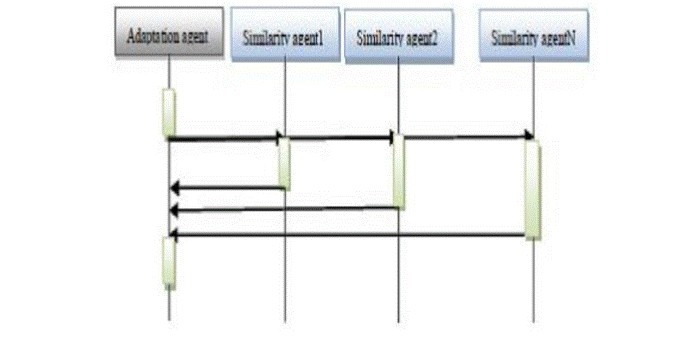
Fig.4. The sequence diagram of IK-DCBRC
The
similarity agents receive the request and compute the membership of the query
in the class by using their learned knowledge and the mean values of the
similarity measures, see (5), (6), and (7). More details are published in [3,
24]. The adaptation agent, in this example, received the following messages:

The last
action is the inference from the adaptation knowledge base for the seven

Empirical
experiments
The first
results published in [23 and 27], by applying just the local-global similarity
measures, did not ensure the trust of physicians. This was due to the low
precision of the system: from 25% to 49% as rate of correct classification with
several aggregation functions. Nevertheless, these poor results encouraged us
to apply the Intensive-Knowledge Case-Based Reasoning approach [27, 28] and the
Fuzzy Sets Theory [25, 26] for augmenting the precision of the developed
system.
IK-DCBRC is a personalized classification system in which several
similarity measures can be used for the classification. As mentioned in [3], we
have realized several experiments for the evaluation and validation of the
developed system and the introduced fuzzy similarity model. The most relevant
results are described in Table 1. These results represent three experiments
achieved in the classification of 400 cardiac beats.

Experiment1
demonstrated that our rule-based system had important uncertainty problems,
because the rate of correct classification was only 74%. This is probably due
to using rules only partially, or the measures of ECG parameters were
approximate
Experiment2
improved the impact of Case-Based Reasoning against the rule-based system.
However, the uncertainty is still important.
The best
result, which represents entirely recognized arrhythmias was the third
experiment. This experiment improves the usefulness of applying fuzzy
similarity measures and domain rules. This is due to the strongest impact of
the Fuzzy models resolving the uncertainty problems.
The accuracy
of this system was also measured via a benchmark realized by two international
medical data sets: MIT-BIH for the cardiac arrhythmia in [30] and a breast
cancer dataset collected and published by Dr. Wollberg in [24]. Other results
and deep comparisons with the related works exist in [23-32].
4. Explanations
in intelligent systems
The concept
of explanation is a common area of interest in several related domains such as
didactics, physics, cognitive systems, philosophy, and other domains.
Intelligent systems can be viewed as an applied science of cognitive systems.
Usually, these complex systems confront a wide variety of critical applications
where the uncertainty represents an important risk. Under these circumstances,
the explanation of intelligent systems behaviors becomes a necessity for a
trusted interaction between the users and these complex systems.
The
terminology of explanation in Artificial Intelligence (AI) takes two forms: 1)
a process of reasoning as a necessary cognitive component, and 2) an additional
component, which helps users to interpret and understand the cognitive system
[33]. In the literature of explanation, an important systematic review [9] is
published, in which an historical overview of the concept uses philosophy and
AI. Two taxonomies of explanation are defined, the first one according to the
users’ goals (Transparency, Justification, Relevancy, Conceptualization,
Learning) [34]. The second taxonomy [9] is defined according to the existing
implementation of explanation in the artificial reasoning systems (see Table2).
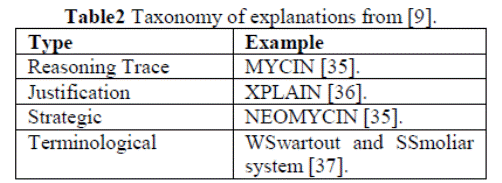
5. Explainer
- Conceptual
model
We have
developed a cognitive agent for a multi-level explanation of the decision
supported by IK-DCBRC. As shown in Fig 5, the explanation agent visualizes the
appropriate explanation for the level of abstraction selected by the users. The
agent ensures an intelligent interaction by inferring from the explanation
knowledge base. This inference is for an appropriate explanation of the
diagnosis supported and logged by IK-DCBRC. Three levels of abstraction are
defined for an appropriate visualization of all kinds of explanation. Some
related works in the use of explanation knowledge bases, are described in [38,
39].
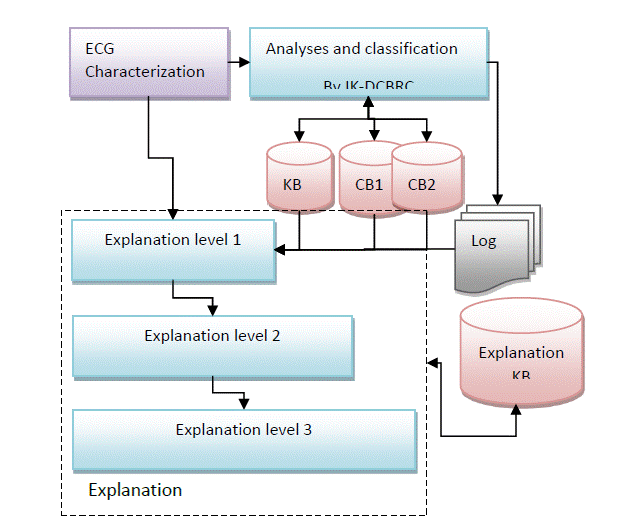
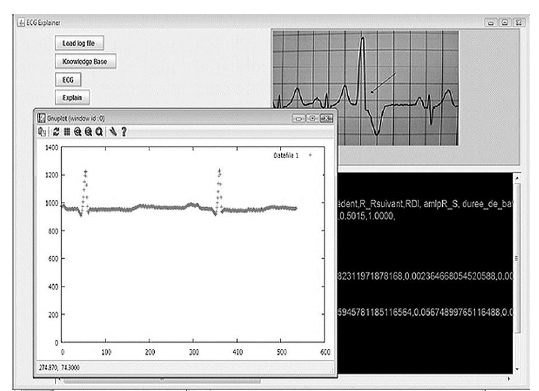
Fig.5. The explanation agent and its environment.
- The Graphical User
Interface
As presented
in Fig 6, the explanation agent interface facilitates the definition of the
level of abstraction, the selection of input files (the log file, the case
bases, and the explanation knowledge base) and the visualization of
explanations. There are three levels of abstractions: one for novice users, one
for medical experts, and one for developers. The explanation agent should reuse
some cases for ensuring the needed kind of explanation is adapted to that of
the application users. The important impact of a Fuzzy similarity model appears
to be in the simplified method of presentation where the users understand the
linguistic variables more than similarity values. Some web links such as wiki
documents are used for explanations to novice users. The explanation agent
visualizes also the ECG and an annotated image of the arrhythmia (for example
the PVC in Fig 5).

Fig. 6. The explanations agent user
interface.
- The log file
The log file
constructed by the intelligent system contains the different useful information
and reasoning traces about the decision inferred by the cognitive agents. Log
file contents are included in Table 3.
Table3. The information logged by the DSS IK-DCBRC
|
Features |
Description |
|
|
Query id |
The identification of the query |
|
|
Pattern |
List of the features of the query |
|
|
Query |
List of the features values of the query |
|
|
RBSrsp |
The response inferred from the expert system |
|
|
RBST |
The trace of reasoning of the expert system (the used rules). |
|
|
SimAgent |
Sim |
Similarity function, distance function and their parameters. |
|
Wi |
List of the features importance degree
|
|
|
Rsp |
Rate of membership in the fuzzy sets: S (similar), U (unknown), N (not
similar),or the global similarity(if the agent used the traditional
similarity) |
|
|
AdaptAgent |
Adrsp |
The response of the adaptation |
|
Adpttr |
The trace of reasoning in the adaptation(the used rule for adaptation) |
|
|
Disease |
The
detected disease |
|
- Level of
abstractions
The cognitive agent for
explanation defines the following three levels of abstraction selected by the
users (Fig 7, 8, and 9):
- Level 1
In this
level, the agent visualizes an ordinary explanation for novice users. The agent
analyses the log file and the explanation knowledge base. After that, the agent
presents the disease, the terminological explanation and the indexed links of
useful wiki documents and the annotated image of the cardiac beat, for
conference.

Fig.7. Example of explanation in level 1 of PVC arrhythmia.
- Level 2
In this
level of abstraction, deep explanations are expected by medical doctors. After
the analyze step and inferring step the agent visualizes the same explanation
as in level 1, but the agent adds other kinds of explanations; for the
justifications of the generated decision as in for example Fig 8, the agent
visualizes the abnormal features.
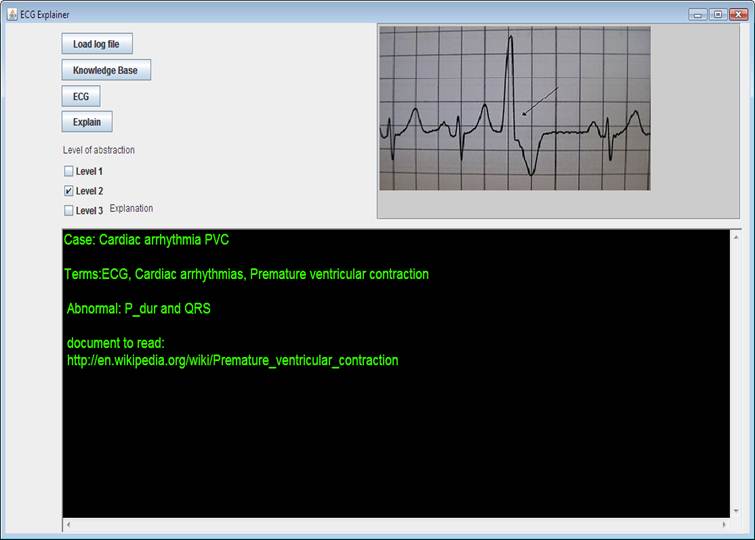
Fig.8. Example of explanation in level 2 of PVC arrhythmia.
- Level 3
In this
level, all kinds of explanations are visualized; this level is designed for
developers and experts. The agent presents the arrhythmia, the reasoning
traces, the strategy of reasoning, the justifications, and the terminological
explanation. This level of abstraction helps the developers to understand the
abnormality inferred by the reasoning system for evaluation and
maintenance.
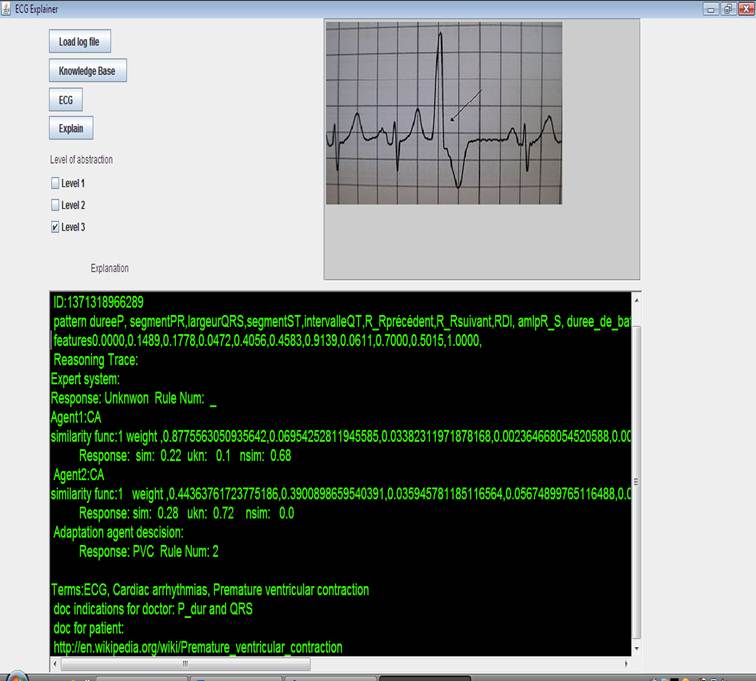
Fig.9. Example of explanation in level 3 of
PVC arrhythmia.
As mentioned
above, accuracy of the decision support system depends on the extracted
knowledge used and the applied similarity measures, for the mentioned reasons,
the role of the explanation becomes crucial in the exploration cycle.
The
physiological signal ECG could be visualized in all levels, but the
characterization appears only in Level 3. This distinction is due to the
complexity of the characterized information.
Figs 7-9
illustrate an example of explanation in which the IK-DCBRC generates the PVC cardiac
arrhythmia class for the introduced cardiac beat. In Fig 6, the response
associated with terminological explanations and document links are visualized
when Level 1 is selected. On the second level of explanation, the agent adds
the justification of the arrhythmia, in Fig 8, the cardiac beat characteristics
imply that “the P and the QRS durations
are abnormal”.
In Fig 9,
all kinds of explanation exist; the user can detect some conflicts. In the
visualized explanations, the decision inferred from the rule-based system is
unknown. The adaptation agent response is, in this example, the PVC class by
using rule number 2 of the adaptation knowledge base. The rates of membership
in similar, unknown and not similar fuzzy sets, of each similarity agent are presented.
Each similarity function used by the agents is visualized, function number 1,
which refers to the sigmoid, with the appropriate weights vector, represents
the importance degree of the attributes as result of a learning process.
In this
example, a conflict can be detected, where the rate of membership in the
similar set is so close: 22% for the normal class and 28% for the PVC class.
However, the rate of membership in the not similar set is 68%for the normal
class and 0.0% for the PVC class. This last observation decreases the
uncertainty of the obtained conclusion and gives more trust.
In the
literature, forty cardiac arrhythmias are defined, which justifies the use of
an external knowledge base specializing in explanation for greater flexibility
of the system
- Evaluation
of the explanation agent
In this
step, we have used some well diagnosed cardiac beats, which are classified by
BIH doctors and IK-DCBRC. We have used the same queries as Experiment 3
described in Table1. According to the trace of reasoning visualized by the
explanation agent and the observation of real domain experts, we have defined
three levels of risks (low, medium, and high). Table 4 summarizes the results
of explanation and the concluded results.
Table 4. The results of explanation by measuring risks
after explanation process with the same parameters of experiment3 (see table
1).
|
Class |
Number of instances |
Low risk |
Medium risk |
High risk |
Total |
|
Normal |
100 |
52 |
10 |
38 |
50℅ |
|
PVC |
100 |
100 |
0 |
0 |
50℅℅ |
|
Total |
200 |
76℅ |
5℅ |
19℅ |
100℅ |
Although all
queries are well recognized by IK-DCBRC, just 76℅ of them are classified with
low risk and 5℅ with medium risk. The high risk in classification, which is
19℅, represents critical cases in which the similarity or dissimilarity is
relatively equal or the unknown is high.
5. Conclusion
The
pragmatism and transparency of intelligent systems in medical domains and
diagnosis are important and active research areas. The main achievement in this
research work is focused on applying explanation-aware component for explaining
the cardiac arrhythmia diagnosis supported by IK-DCBRC. The awareness of the
explainer was introduced by ensuring an appropriate explanation for categorized
users associated with a multi-level abstraction of explanation and
visualization. The evaluation improves the importance of the proposed component
for developing a strong relationship with users, by recognizing the risk level
of each decision.
The
awareness parameter used in the selection of the level of abstraction is
actually capitalized only by the satisfaction of users in his interaction with
the explainer. Going forward, we believe that other external informational
elements [40] about users influence the appropriation and transparence of the
explanation as users’ social identity.
6. Conflict
of interest statement
We certify that there
is no conflict of interest with any financial organization in the subject
matter or materials discussed in this manuscript.
7. Authors’
biography
Dr Abdeldjalil Khelassi: is an
Associate Professor at Tlemcen University, Algeria. He obtained his Doctor in
Science (2013), Magister (2008) and Engineer (2004) in Computer Sciences from
the Department of Computer Science at Tlemcen University. His research interest
includes cognitive systems, knowledge-based systems, case-based reasoning,
distributed reasoning, fuzzy sets theory and health science. He is the editor
manager of Medical Technologies Journal and the co-editor in chief of
Electronic Physician Journal.
Dr Vania V. Estrela: B.Sc. degree from Federal University of Rio de Janeiro (UFRJ) in
Electrical and Computer Engineering (ECE);
M.Sc. in ECE from the Technological Institute of Aeronautics (ITA) and
Northwestern University, USA; and Ph.D.
in ECE from the Illinois Institute of Technology (IIT), Chicago, IL,
USA. Taught at: DeVry University; State
University of Northern Rio de Janeiro (UENF), Rio de Janeiro (RJ), Brazil; and
for the West Zone State University (UEZO), RJ. Research interests include
signal/image/video processing, inverse problems, computational &
mathematical modeling, stochastic models, multimedia, electronic
instrumentation, machine learning and remote sensing. Reviewer for: IMAVIS
(Elsevier); Pattern Recognition (Elsevier); COMPELECENG (Elsevier); Measurement (Elsevier); IET Image Processing;
EURASIP Journal on Advances in Signal Processing (JASP) (Springer); IEEE
Journal of Biomedical and Health Informatics (JBHI); Int’l J. of Electrical and
Comp. Engineering (IJECE); Int’l
Journal of Ambient Computing and
Intelligence (IJACI); Journal of Microwaves, Optoelectronics and
Electromagnetic Applications (JMOE); and SET Int'l J. Broadcast Eng.
(SET-IJBE). Engaged in topics such as technology transfer, STEM education,
environmental issues and digital inclusion. Member of IEEE, and ACM. Editor of
IJACI, EURASIP JASP, and SET-IJBE.
Dr . D. Jude Hemanth: received his B.E degree in ECE from Bharathiar University in 2002, M.E
degree in communication systems from Anna University in 2006 and Ph.D. from
Karunya University in 2013. His research areas include Computational
Intelligence and Image processing. He has authored more than 100 research
papers in reputed SCIE indexed/Scopus indexed International Journals and
International Conferences with leading publishers such as Elsevier, Springer,
IEEE, etc. His Cumulative Impact Factor is more than 50. He has authored 1 book
with (VDM-Verlag, Germany) and 11 edited books with reputed publishers such as
Elsevier, Springer, IET and IOS Press.
8. References
1.Hannah Ritchie and Max Roser (2018)
- "Causes of Death". Published online at OurWorldInData.org.
Retrieved from: 'https://ourworldindata.org/causes-of-death' [Online Resource]
2.Khelassi, A., Yelles-chaouche, S. N., & Benais, F.
(2017). Multi-arrhythmias detection with an
XML rule-based system from 12-Lead Electrocardiogram. Electronic physician,
9(5), 4357. https://doi.org/10.19082/4357 PMid:28713507 PMCid:PMC5498700
3.Abdeldjalil KHELASSI, Mohamed Amin
Chick. Fuzzy knowledge-intensive case based classification for the detection of
abnormal cardiac beats. Electronic Physician, 2012;4(3):565-
4.Smisek, R., Hejc, J., Ronzhina, M.,
Nemcova, A., Marsanova, L., Kolarova, J., ... & Vitek, M. (2018).
Multi-stage SVM approach for cardiac arrhythmias detection in short single-lead
ECG recorded by a wearable device. Physiological Measurement. https://doi.org/10.1088/1361-6579/aad9e7
PMid:30102239
5.Xiong, Z., Nash, M. P., Cheng, E.,
Fedorov, V. V., Stiles, M. K., & Zhao, J. (2018). ECG signal classification
for the detection of cardiac arrhythmias using a convolutional recurrent neural
network. Physiological Measurement. https://doi.org/10.1088/1361-6579/aad9ed
PMid:30102248
6.Klir, G.J. and B. Yuan. (1995).
Fuzzy Sets and Fuzzy Logic. Theory. and Applications, Ed. Prentice-Hall.
7.Aamodt, Agnar, and Enric Plaza.
"Case-based reasoning: Foundational issues, methodological variations, and
system approaches." AI communications 7.1 (1994): 39-59.
8.Hadjiski, M., Grancharova, A.,
& Boshnakov, K. (2018). Intelligent Two-Level Optimization and Model
Predictive Control of Degrading Plants. In Learning Systems: From Theory to
Practice (pp. 117-134). Springer, Cham.
https://doi.org/10.1007/978-3-319-75181-8_6
9.Frode Sørmo, Jörg Cassens, and
Agnar Aamodt "Explanation in Case-Based Reasoning - Perspectives and
Goals" Artificial Intelligence Review, 24(2):109-143, October 2005.
https://doi.org/10.1007/s10462-005-4607-7
10.John R. Hampton, 2013, The ECG
Made Easy, Churchill Livingstone8 edition (August 27, 2013). ISBN-10: 0702046418.
11.Acharya, U. R., Hagiwara, Y., Koh, J.
E. W., Oh, S. L., Tan, J. H., Adam, M., & San Tan, R. (2018). Entropies for automated
detection of coronary artery disease using ECG signals: A review.
Biocybernetics and Biomedical Engineering. https://doi.org/10.1016/j.bbe.2018.03.001
12.Pan J, Tompkins WJ, A real-time
QRS detection algorithm, IEEE Trans Biomed Eng 32:230-236, 1985.
https://doi.org/10.1109/TBME.1985.325532 PMid:3997178
13.Berwal, D., Kumar, A., &
Kumar, Y. (2018). Design of high performance QRS complex detector for wearable
healthcare devices using biorthogonal spline wavelet transform. ISA transactions.https://doi.org/10.1016/j.isatra.2018.08.002 PMid:30104037
14.Sotelo, S., Arenas, W., & Altuve,
M. (2018, April). QRS complex detection based on
continuous density hidden Markov models using univariate observations. In
Journal of Physics: Conference Series (Vol. 1002, No. 1, p. 012009). IOP
Publishing. https://doi.org/10.1088/1742-6596/1002/1/012009
15.Ouali, M. A., Ghanai, M., & Chafaa, K. (2018). A new type-2 fuzzy
modelling and identification for electrophysiological signals: a comparison
between PSO, BBO, FA and GA approaches. International Journal of Modelling,
Identification and Control, 29(2), 163-184. https://doi.org/10.1504/IJMIC.2018.10011613
16.Rai, H. M., & Chatterjee, K. (2018). A Novel Adaptive Feature
Extraction for Detection of Cardiac Arrhythmias Using Hybrid Technique MRDWT
& MPNN Classifier from ECG Big Data. Big data research.
https://doi.org/10.1016/j.bdr.2018.02.003
17.Zhaohao Sun, Jun Han, and Dong
Dong (2008). Five Perspectives on Case Based Reasoning. In: D.-S. Huang et al.
(Eds.): ICIC 2008, LNAI 5227, pp. 410-419, 2008.
18.Plaza, Enric; McGinty, Lorraine
(2006). Distributed case-based reasoning.The Knowledge
engineering review, Vol. 20, N. 3,
pp. 261-265. https://doi.org/10.1017/S0269888906000683
19.González-Briones, A., Prieto, J., De
La Prieta, F., Herrera-Viedma, E., & Corchado, J. M. (2018). Energy optimization using
a case-based reasoning strategy. Sensors, 18(3), 865.
https://doi.org/10.3390/s18030865 PMid:29543729 PMCid:PMC5877327
20.Miller, K., & Mansingh, G.
(2017). OptiPres: a distributed mobile agent decision support system for
optimal patient drug prescription. Information Systems Frontiers, 19(1),
129-148. https://doi.org/10.1007/s10796-015-9595-9
21.Cho, B., Kim, K. J., & Chung,
J. W. (2017). CBR-based network performance management
with multi-agent approach. Cluster
Computing, 20(1), 757-767. https://doi.org/10.1007/s10586-017-0762-2
22.Aissani, N., Guetarni, I. H. M., & Zebirate, S.
(2017). Dynamic control for safety system
multi-agent system with case-based reasoning. International Journal of
Reliability and Safety, 11(3-4), 238-255.
https://doi.org/10.1504/IJRS.2017.089708
23.Khelassi (2012). ''Distributed
Case Based Reasoning for Cardiac Arrhythmias: Health sciences application''
LAMBERT ACADEMIC PUBLISHING -LAP-.
24.A.khelassi: ''Data mining
application with case based reasoning classifier for breast cancer decision
support''. MASAUM Inter Conf on Info Tech 2012 MI-CIT'12; 07/2012
25.A.Khelassi, "Fuzzy Case Based
Classification applied in the classification of breast cancer pattern"
Doctorial STIC11, TEBASSA, Algeria, 2011.
26.Khelassi, MA Chikh "Fuzzy knowledge-intensive case
based classification applied in the automatic cardiac arrhythmias
diagnosis" Colloque sur L'Optimisation et les Systèmes d'Information COSI
2011 P460, 24 -27 Avril, Guelma, Algérie
27.A.KHELASSI "Fuzzy Similarity Based classification
Versus Intensive Knowledge Case Based classification" Colloque
International sur les Nouvelles Techniques Immuno-Cognitive dans les Réseaux
Informatiques NTICRI '09, Oran, Algeria
28.A.KHELASSI, M A CHIKH «Distributed classification using
Intensive Knowledge Case Based Reasoning'' Conférence Internationale des
Technologies de l'Information et de la Communication CITIC'2009. Setif Algeria.
29.Abdeldjalil Khelassi, Mohamed Amin
Chikh: Cognitive amalgam with a distributed fuzzy case-based reasoning system
for an accurate cardiac arrhythmias diagnosis. Int. J. Information
And Communication Technology IJICT.
07/2015; 7(4/5):348-365. https://doi.org/10.1504/IJICT.2015.070297
30.A.KHELASSI, M A CHIKH "
Distributed case based reasoning for cardiac arrhythmias diagnosis'' MCSEAI
2008 Maghrebian Conference of Software Engineering and Artificial Intelligence,
28- 30 April 2008, Oran, Algérie,
31.Khelassi, A. (2015, January). The
impact of uncertainty measures in the cardiac arrhythmia detection supported by
IK-DCBRC. In Proceedings of the International Conference on Information and
Knowledge Engineering (IKE) (p. 144). The Steering Committee of The World
Congress in Computer Science, Computer Engineering and Applied Computing
(WorldComp).
32.KHELASSI, Abdeldjalil.
Explanation-aware computing of the prognosis for breast cancer supported by
IK-DCBRC: Technical innovation. Electronic Physician, 2014, vol. 6, no 4, p.
947.
33.Agnar Aamodt. A
Knowledge-Intensive, Integrated Approach to Problem Solving and Sustained
Learning. PhD thesis, Norwegian Institute of Technology, Department of Computer
Science, Trondheim, May 1991.
34.Thomas R. Roth-Berghofer and Jörg
Cassens "Mapping Goals and Kinds of Explanations to the Knowledge
Containers of Case-Based Reasoning Systems", ICCBR 2005, volume 3630 of
LNAI, pages 451- 464, Chicago, 2005. Springer.
https://doi.org/10.1007/11536406_35
35.William J. Clancey. The epistemology
of a rule-based expert system: A framework for explanation. Artificial
Intelligence, 20(3):215-251, 1983. https://doi.org/10.1016/0004-3702(83)90008-5
36.William R. Swartout. What kind of
expert should a system explain: A system for creating and explaining expert
consulting programs. Artificial Intelligence, 21:285-325, 1983. https://doi.org/10.1016/S0004-3702(83)80014-9
37.William R. Swartout and Stephen W.
Smoliar. On making expert systems more like experts. Expert Systems,
4(3):196-207, 1987. https://doi.org/10.1111/j.1468-0394.1987.tb00143.x
38.Goh, Y. M., & Guo, B. H. (2018). FPSWizard: A web-based
CBR-RBR system for supporting the design of active fall protection systems. Automation in
Construction, 85, 40-50. https://doi.org/10.1016/j.autcon.2017.09.020
39.LIND, Linnéa Karlsson, VON EULER, Mia, KORKMAZ, Seher, et
al. Sex differences in drugs: the development of a
comprehensive knowledge base to improve gender awareness prescribing. Biology
of sex differences, 2017, vol. 8, no 1, p.
32.https://doi.org/10.1186/s13293-017-0155-5 PMid:29065918 PMCid:PMC5655861
40.Khelassi, A. (2016, January). An
augmented pragmatics by explanation-aware and recommendation-aware in the
context of decision support. In Proceedings of the International Conference on
Information and Knowledge Engineering (IKE) (p. 79). The Steering Committee of
The World Congress in Computer Science, Computer Engineering and Applied
Computing (WorldComp).